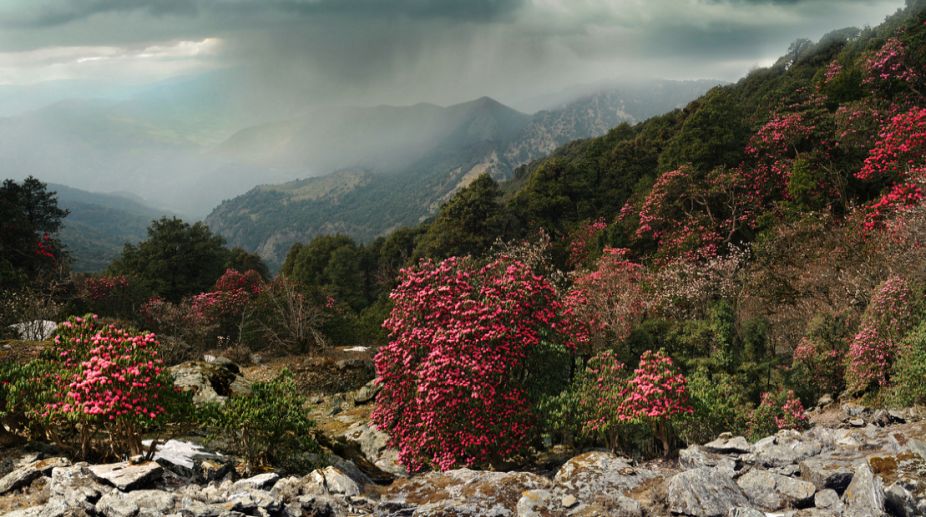If conservation is your forte, then here’s an interesting piece of information about conservation of floral diversity in the high-altitude zone of Eastern Himalayas. The famed national park in Darjeeling Hills where rhododendrons bloom in abundance is the pristine Neora Valley National Park close to Lava. A study taken up by Abhaya Prasad Das, visiting professor, Rajeev Gandhi University, Itanagar entitled “The Flora of Neora Valley National Park” dug up many interesting facts about conservation of floral vegetation at high-altitude zone.
The study that lasted for three years was taken up in 1993 by Das along with West Bengal forest department and Siliguri-based voluntary outfit-North Eastern Society for Preservation of Nature and Natural Resources.
Advertisement
Das informed, “At a time when there were no motorable roads inside the Neora Valley National Park, we had to trek for miles to explore the floral diversity in the high-altitude areas soaring from 300 metres up to 3,100 metres above sea level in the park. Spread over 8,800 hectares of land, the climate ranges from tropical to sub-alpine. We had put up in tents for days together in the inhospitable terrain of the Himalayas and the camps were set up at Aluabari, Rechela, Thosum and Joributi in the high-altitude zone. We spent about 40 nights in tents and at times, we were in snowy areas of Rechela.”
The high-altitude area of Neora Valley National Park has a wide diversity of rhododendrons that bloom in the months of March and April.
Das said, “The park forms a favourable habitat for red panda. There are medicinal floral species including chirata, aconites and Indian ginseng. The park has around 16 per cent of endemic floral species. Once thought to be an extinct floral species, there is Primula kingii in the park that has not been explored in any other national parks for more than a century. This floral species has been explored from Jorepokhri that forms the source of river Neora.”
Besides, there are some areas that have exclusively a wide range of rhododendrons like Rhododendron arboreum and Rhododendron dalhousiae. Das further said, “Close to rhododendron is another rare floral species known as Enkianthus deflexus found in the park. One of the rarest floral species is the saprophytic orchid called Galeola lindleyana.
There are those attractive cobra lilies that grow in the park.” The floral diversity in the national park is quite safe as compared to Garumara National Park and Jaldapara Wildlife Sanctuary. Das added, “As of now, the state forest department has come up with one motorable road inside the park. Plans are on for the Indian Army to lay the foundation of a motorable road passing through the park. If the Indian Army has its way, then the natural vegetation will be disturbed in the park with incidences of rampant poaching. It is indispensable that no new floral species be added in the park and modification of vegetation should be kept at bay all for the purpose of floral conservation.”











